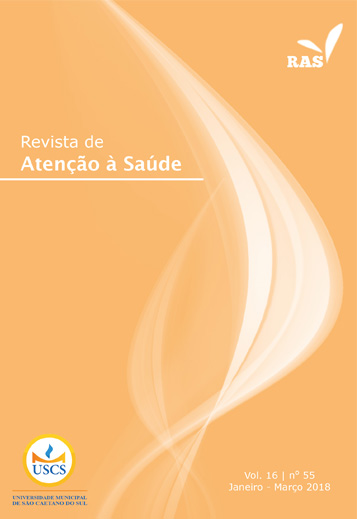THE SCHOOL GARDEN IN A CONTEXT OF FOOD AND NUTRITIONAL EDUCATION IN A PUBLIC SCHOOL
DOI:
https://doi.org/10.13037/ras.vol16n55.4893Keywords:
Feeding behavior, food and nutrition education, nutritional statusAbstract
Introduction: School gardens are part of strategies to improve the dietary and nutritional quality of schoolchildren. Materials and methods: Food and nutrition education activities related to the consumption and cultivation of vegetables were carried out. During the EAN actions, two questionnaires were applied to evaluate the consumption of vegetables: one was a pre-action, the other was subsequent to the activity to verify the knowledge acquired according to the exposed contents. Results: Thirty students (mean age of 7.4 years) participated in the study, 14 (46.6%) were female and 16 (53.3%) were male. The most consumed vegetables were lettuce, cabbage, tomato, and broccoli. Regarding the frequency of consumption, it was verified that 46.6% of the students consume daily some vegetables. There were no associations between the frequency of consumption of vegetables and nutritional status. Conclusions: The children presented a good knowledge about food and nutrition education in the context of the consumption of vegetables, but they also presented low consumption of them. Thus, it is suggested more nutritional strategies in order to encourage and monitor the consumption of vegetables, as the school can help in the optimization of the consumption of this important food group for the development of schoolchildren.
Downloads
References
Cruz CS, Silva CH. Obesidade infantil: análise sobre a produção científica brasileira no Scielo. Anais do 16º Encontro Nacional de Pesquisa em Ciência da Informação; 2015, João Pessoa, Brasil. João Pessoa: UFPB; 2015.
Institute of Medicine. School meals: building blocks for healthy children. Washington, DC: National Academies; 2010.
Bere E, Klepp KI. Correlates of fruit and vegetable intake among Norwegian schoolchildren: parental and self-reports. Public Health Nutr. 2004;7(8):991-8.
Baranowski T, Cullen KW, Baranowski J. Psychosocial correlates of dietary intake: advancing dietary intervention. Annu Rev Nutr. 1999;19(1):17-40.
Pearson N, Biddle SJ, Gorely T. Family correlates of fruit and vegetable consumption in children and adolescents: a systematic review. Public Health Nutr. 2009;12(2):267-83.
World Health Organization. WHO fruit and vegetable promotion initiative: report of the meeting, Geneva, 25-27 August 2003. Geneva: WHO; 2003.
Hill J, Peters J, 1998. Environmental contributions to the obesity epidemic. Science. 1998;280(5368):1371-4.
Wells NM, Ashdown S, Davies E, Cowett F, Yang Y. Environment, design and obesity. Environ Behav. 2007;39(1):6-33.
Krølner R, Rasmussen M, Brug J, Klepp, KI, Wind M, Due P. Determinants of fruit and vegetable consumption among children and adolescents: a review of the literature. Part II: qualitative studies. Int J Behav Nutr Phys Act. 2011;8:1-38.
Lynch C, Kristjansdottir AG, Te Velde SJ, Lien N, Roos E, Thorsdottir I, et al. Fruit and vegetable consumption in a sample of 11-year-old children in ten European countries: the Pro Greens cross-sectional survey. Public Health Nutr. 2014;17(11):2436-44.
Blissett J, Fogel A. Intrinsic and extrinsic influences on children’s acceptance of new foods. Physiol Behav. 2013;121:89-95.
Cooke L, Carnell S, Wardle J. Food neophobia and mealtime food consumption in 4-5 year old children. Int J Behav Nutr Phys Act. 2006;3:1-6.
Reed DR, Tanaka T, McDaniel AH. Diverse tastes: genetics of sweet and bitter perception. Physiol Behav. 2006;88(3):215-26.
Hutchinson J, Christian MS, Evans CEL, Nykjaer C, Hancock N, Cade JE. Evaluation of the impact of school gardening interventions on children’s knowledge of and attitudes towards fruit and vegetables: a cluster randomised controlled trial. Appetite. 2015;91:405-14.
Bertin RL, Malkowski J, Zutter LCI, Ulbrich AZ. Estado nutricional, hábitos alimentares e conhecimentos de nutrição em escolares. Rev Paul Pediatr. 2010;28(3):303-8.
Eckert RG, Silva JMP, Rodrigues VC. Avaliação antropométrica e dietética de professores, funcionários e colaboradores de uma escola privada de Cascavel, Paraná. Anais do 1º Seminário Internacional de Ciência, Tecnologia e Ambiente; 2009, Cascavel, Brasil. Cascavel: Unioeste; 2009.
World Health Organization. Growth reference 5-19 years [Internet]. 2007 [citado em 2017 maio 13]. Disponível em: <https://goo.gl/JiNZC>.
Costa MCD, Cordoni Júnior LC, Matsuo T. Hábito alimentar de escolares adolescentes de um município do oeste do Paraná. Rev Nutr. 2007;20(5):461-71.
Naves MLA. O impacto da educação alimentar e nutricional no reconhecimento e consume de frutas e hortaliças entre alunos de uma escola pública do Distrito Federal [monografia]. Brasília, DF: Universidade de Brasília; 2014.
Downloads
Published
Issue
Section
License
Policy Proposal for Journals offering Free Delayed Access
Authors who publish in this magazine agree to the following terms:
- Authors maintain the copyright and grant the journal the right to the first publication, with the work simultaneously licensed under a Creative Commons Attribution License after publication, allowing the sharing of the work with recognition of the authorship of the work and initial publication in this journal.
- Authors are authorized to assume additional contracts separately, for non-exclusive distribution of the version of the work published in this magazine (eg, publishing in institutional repository or as a book chapter), with the acknowledgment of the authorship and initial publication in this journal.
- Authors are allowed and encouraged to publish and distribute their work online (eg in institutional repositories or on their personal page) at any point before or during the editorial process, as this can generate productive changes, as well as increase impact and citation of the published work (See The Effect of Open Access).









